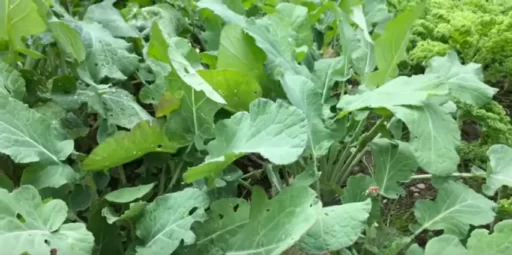Kale, often hailed as one of the most nutritious vegetables you can grow, is packed with essential vitamins and antioxidants. It’s not only delicious but also incredibly easy to cultivate, making it a favorite among home gardeners. This article will delve into the various aspects of growing kale, providing you with essential tips and techniques to ensure a bountiful harvest. By the end of this guide, you’ll be equipped to grow kale successfully and enjoy its health benefits.
Choosing the Right Variety of Kale
One of the first steps in growing kale is selecting the right variety. Kale comes in a stunning array of colors, from bright greens to deep purples, each offering unique flavors and textures that are often unavailable in grocery stores. You can choose from mild, salad-like greens, sweet Red Russian kale, or the nutty, sometimes peppery Italian varieties.
Tuscan Kale (also known as Cavolo Nero or Dinosaur kale) is a personal favorite due to its beautiful bumpy texture. This variety not only looks good but also offers a rich taste that enhances many dishes.
Spacing and Planting Techniques
Kale plants should be spaced about 18 inches (or 45 centimeters) apart to allow them enough room to grow. Starting your kale plants in pots or plug trays away from the main vegetable garden is a good strategy. This method prevents pests like slugs and flea beetles from damaging the seedlings before they establish themselves.

You have two main options for sowing kale:
- Early Spring Sowing: This method allows you to harvest your kale starting in the summer.
- Early Summer Sowing: This approach results in a late summer or autumn crop, extending the harvest into the winter months.
For those in warmer climates, it’s advisable to wait until early autumn to sow, once temperatures start to cool down.
Essential Growing Conditions
Light and Heat
Kale thrives in full sun, particularly in cooler climates. Sunlight is essential for strong growth and sweet-tasting leaves. However, in hot summer conditions, it’s best to provide some shade to prevent the leaves from becoming bitter.
Soil Requirements
Kale prefers well-draining soil enriched with organic matter. Heavy, waterlogged soils can stunt growth, particularly during winter. Adding organic mulch around your kale plants helps maintain soil moisture, keeps roots cool, and promotes healthier growth.
Watering and Nutrition
Consistent watering is crucial for kale. Properly fed and watered plants are better equipped to withstand pests and environmental stress. Incorporate organic fertilizers to provide essential nutrients that promote robust growth.
Managing Pest Issues
Kale is notorious for attracting a variety of pests, including aphids, cabbage worms, and flea beetles. Here are some effective strategies to manage these issues:
- Early Detection: Regularly check your kale plants for signs of pests. Inspect the undersides of leaves where pests like to hide.
- Natural Remedies: For early infestations, clip off affected leaves and dispose of them. Use soapy water to eliminate caterpillars.
- Companion Planting: Planting nasturtiums can lure away pests, while herbs like thyme can confuse them.
- Row Covers: Protect your kale by covering them with insect mesh or horticultural fleece, which keeps pests at bay while allowing light and moisture to penetrate.
Encouraging Resilience in Kale
Kale is a resilient plant, capable of bouncing back from pest attacks. Once winter arrives, many pests will die off or become dormant, allowing your kale to thrive once again. If you experience a setback, don’t be discouraged; your plants are likely to recover.
Harvesting Your Kale
Kale can be harvested once the outermost leaves reach a suitable size. To do this, bend the leaves down and snap them off. The younger, tender leaves are particularly delicious in salads, while the tougher varieties can be steamed or used in smoothies.
Kale’s flavor improves with frost exposure, as the cold converts starches into sugars, enhancing its taste. For optimal freshness, consume kale shortly after harvesting, but if you need to store it, keep it in a refrigerator bag for up to a week to ten days.
Conclusion
Growing kale is a rewarding endeavor that yields a nutritious and versatile vegetable. By selecting the right variety, ensuring proper growing conditions, managing pests, and harvesting at the right time, you can enjoy a continuous supply of fresh kale. This leafy green not only adds flavor to your meals but also boosts your health with its rich nutrient profile. With the right techniques, even novice gardeners can reap the benefits of this fantastic crop.
Frequently Asked Questions
- What is the best time to plant kale?
- Kale can be planted in early spring or early summer. In warmer climates, consider planting in early autumn once temperatures cool down.
- How much sunlight does kale need?
- Kale thrives in full sun, but in hot climates, it may require some shade to prevent bitterness in the leaves.
- What pests commonly affect kale?
- Common pests include aphids, cabbage worms, and flea beetles. Regular inspections and preventive measures can help manage these issues.
- How do I improve the flavor of kale?
- Exposure to frost can enhance kale’s flavor, as it converts starches to sugars.
- What is the best way to harvest kale?
- Harvest kale by snapping off the outermost leaves, ensuring to leave the inner leaves for continued growth.
- Can kale be grown in containers?
- Yes, kale can be successfully grown in containers as long as they have adequate drainage and space for the roots.
- How long does kale take to grow?
- Kale typically takes about 60-90 days from planting to harvest, depending on the variety and growing conditions.






